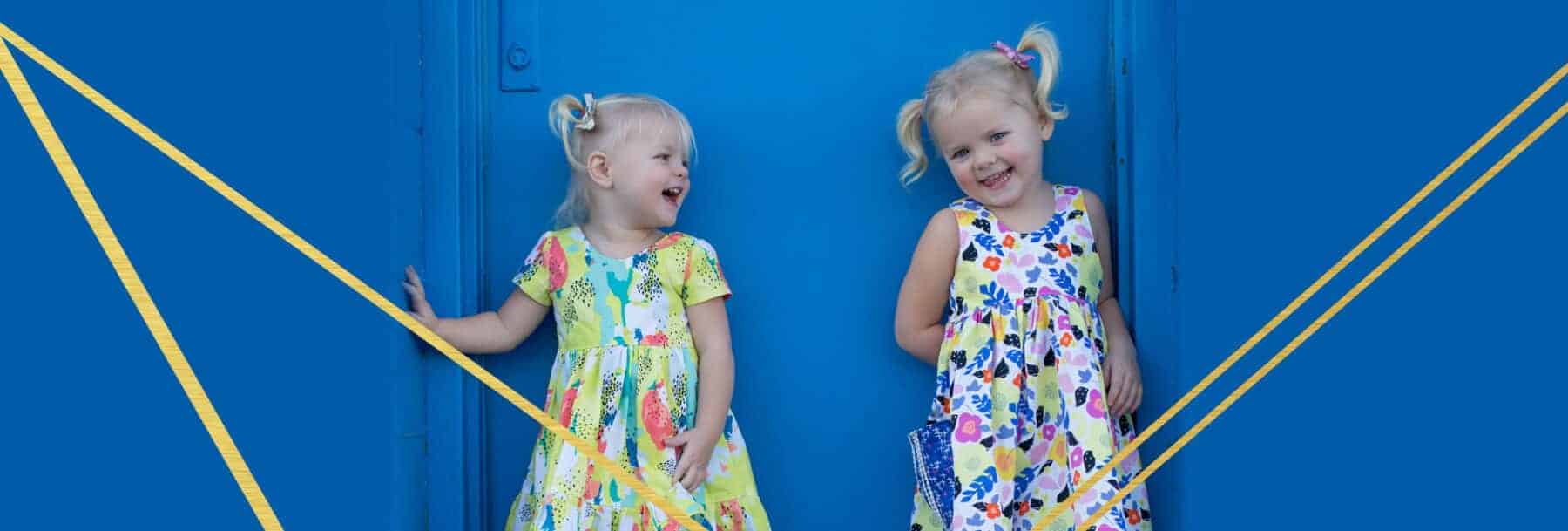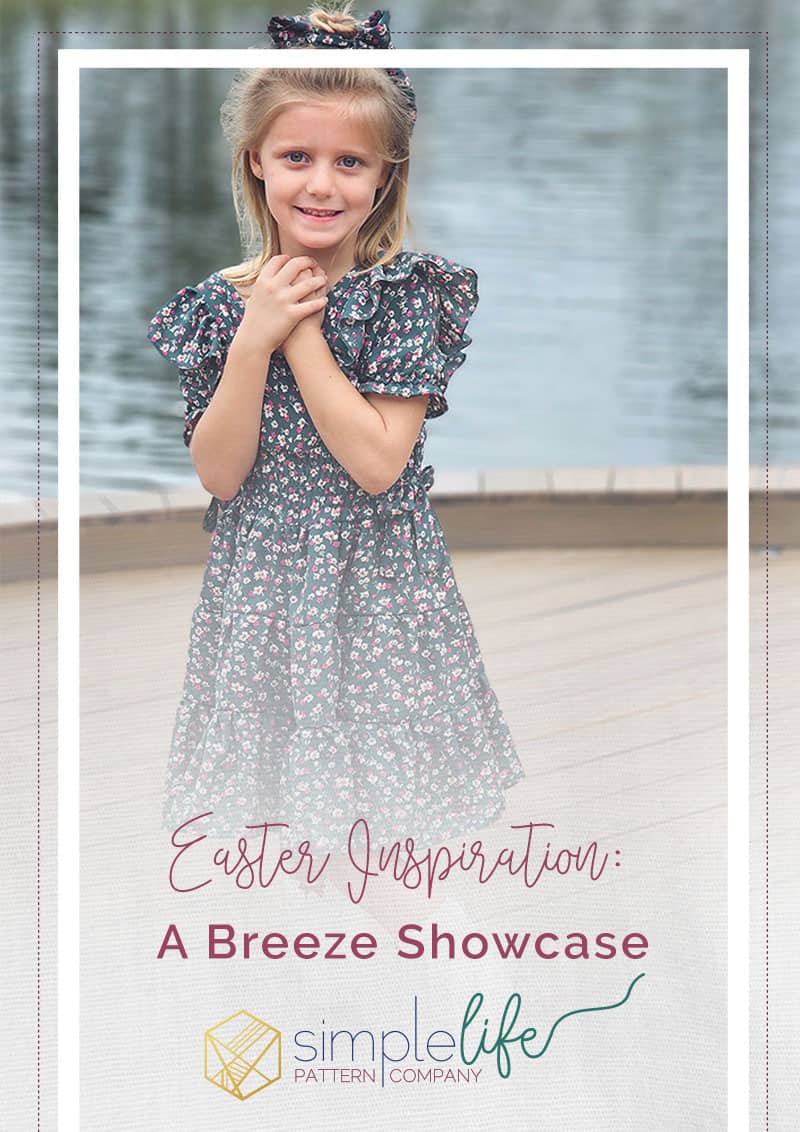
How To Take Measurements for Sewing
Today I will be walking you through how to properly take measurements for sewing. While I could go through every single measurement that you could possibly take for sewing, that would end up in a really long post. And I want this to be useful to YOU! So today, I will be walking you through how to take the common measurements you need when sewing SLPco patterns.
How to Take Measurements for Sewing
Before we start, ideally your child will be in their underwear. For the purposes of this tutorial I’ve put my daughter into a leotard to demonstrate these measurements. Don’t have them wear bulky or loose fit clothing.
Posture is important, make sure your child stands upright and relaxed. For most of their measurements they will need to have their feet together. Have them breathe normally (no holding their breath) and make sure to hold the measuring tape snug to their body.
Chest Measurement
The first measurement I am going to cover is the chest measurement. One of the most important measurements that you’ll need for most of our dress patterns is the chest measurement.

To measure your child’s chest, bring the measuring tape around their back and around the front. The measuring tape should be pulled around the apex (or fullest part) of their chest. Typically This will be right around nipple level on a young child. Keep the measuring tape parallel to the floor. Keep the tape snug, but not tight. Two things to be sure of when taking the chest measurement: make sure your child’s arms are down at their sides. Having their arms up and out can skew their measurements, so make sure they are standing relaxed. And two, make sure they breathe! Holding their breath can skew their measurements.
Waist Measurement
When measuring your child’s waist, you will want to measure their natural waist. This is the smallest part of their torso, right at the bottom of their rib cage. If you are having trouble finding this spot on your child, here is a simple trick: Have them bend to the side at their waist. Where their waist bends is where you want to measure. See below, my daughter is pointing to the point where her waist bends.
* Young children who do not have a defined waist yet can be measured around their front at back at belly button level.
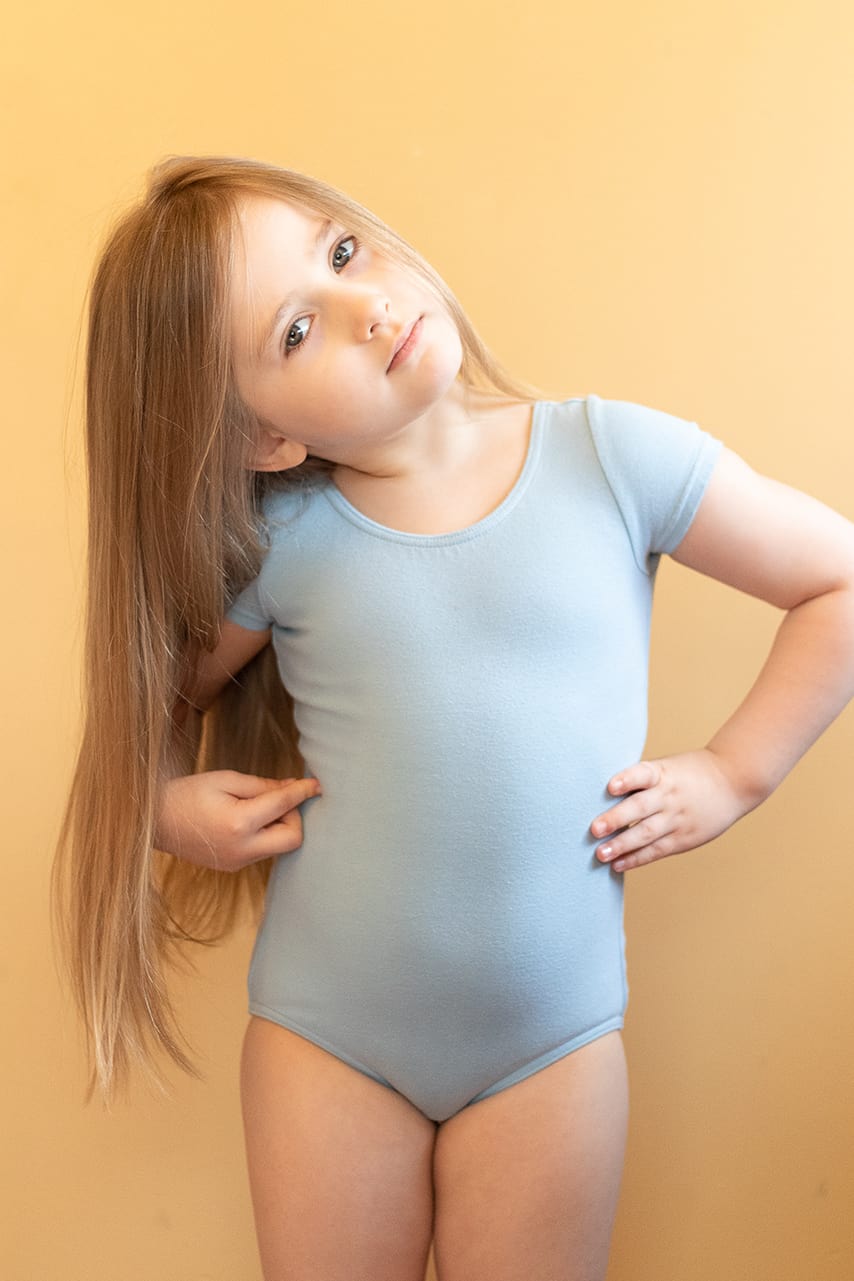
Now that we know where to place the tape measure, it’s time to take the measurement.
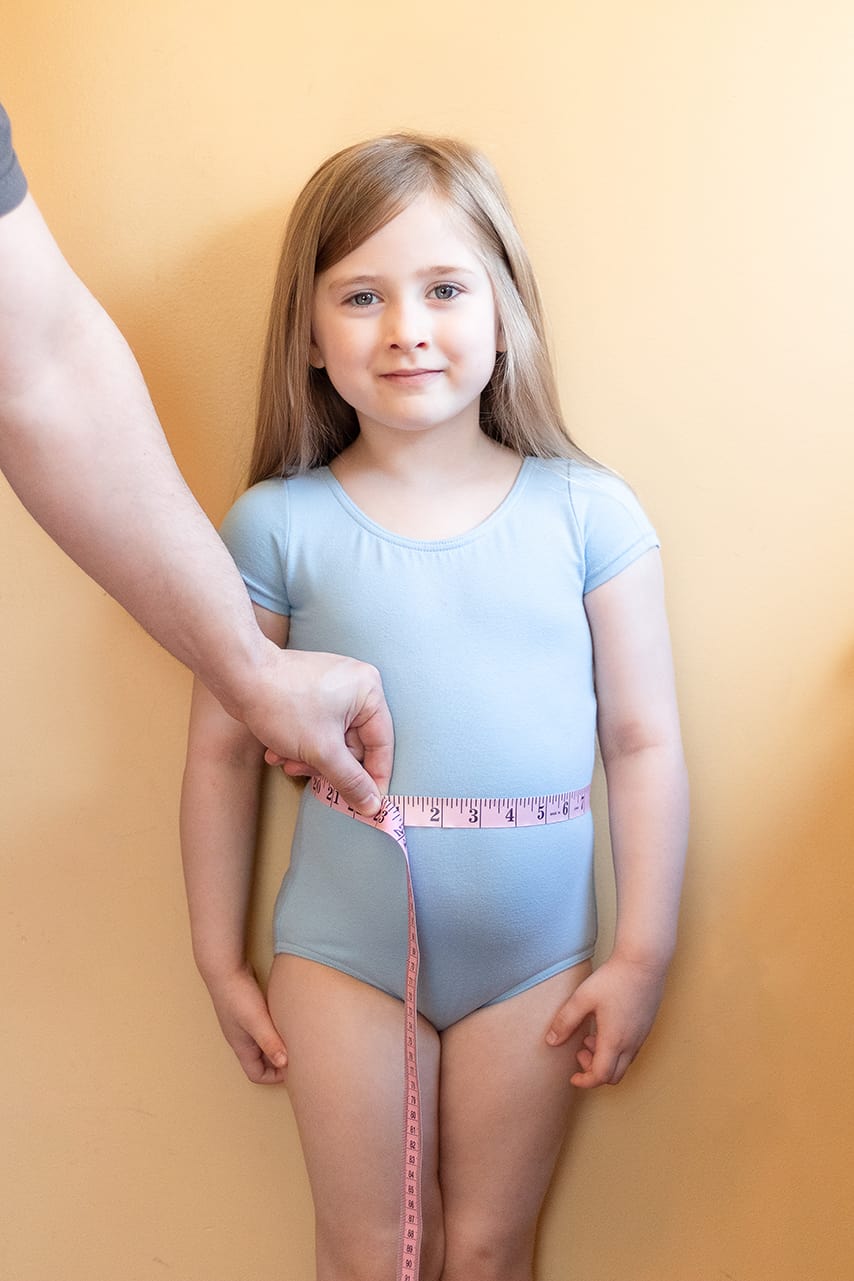 To measure your child’s waist, just like with the chest measurement you will want to make sure that the measuring tape is even across the front and back and parallel to the floor. Again, be sure that your child is not holding their breath and that they are standing comfortably and relaxed.
To measure your child’s waist, just like with the chest measurement you will want to make sure that the measuring tape is even across the front and back and parallel to the floor. Again, be sure that your child is not holding their breath and that they are standing comfortably and relaxed.
Hip Measurement
 As you can see, I lost my measuring helper here, so please bare in mind, you still need to be sure that your measuring tape is parallel to the floor, and snug but not tight.
As you can see, I lost my measuring helper here, so please bare in mind, you still need to be sure that your measuring tape is parallel to the floor, and snug but not tight.
To measure your child’s hips, have them place their feet together, stand straight, and measure around the fullest/largest part of their hip area.
Inseam Measurement
The inseam measurement is only found on pants patterns.

Have your child stand with their legs slightly spread and place the tape measure against their inner thigh, right at crotch level. Making sure to pull the measuring tape taught, measure the distance between their crotch and the bottom of their ankle (where most pants finish).
Trunk Measurement
This measurement is commonly used for leotards and swimsuits.
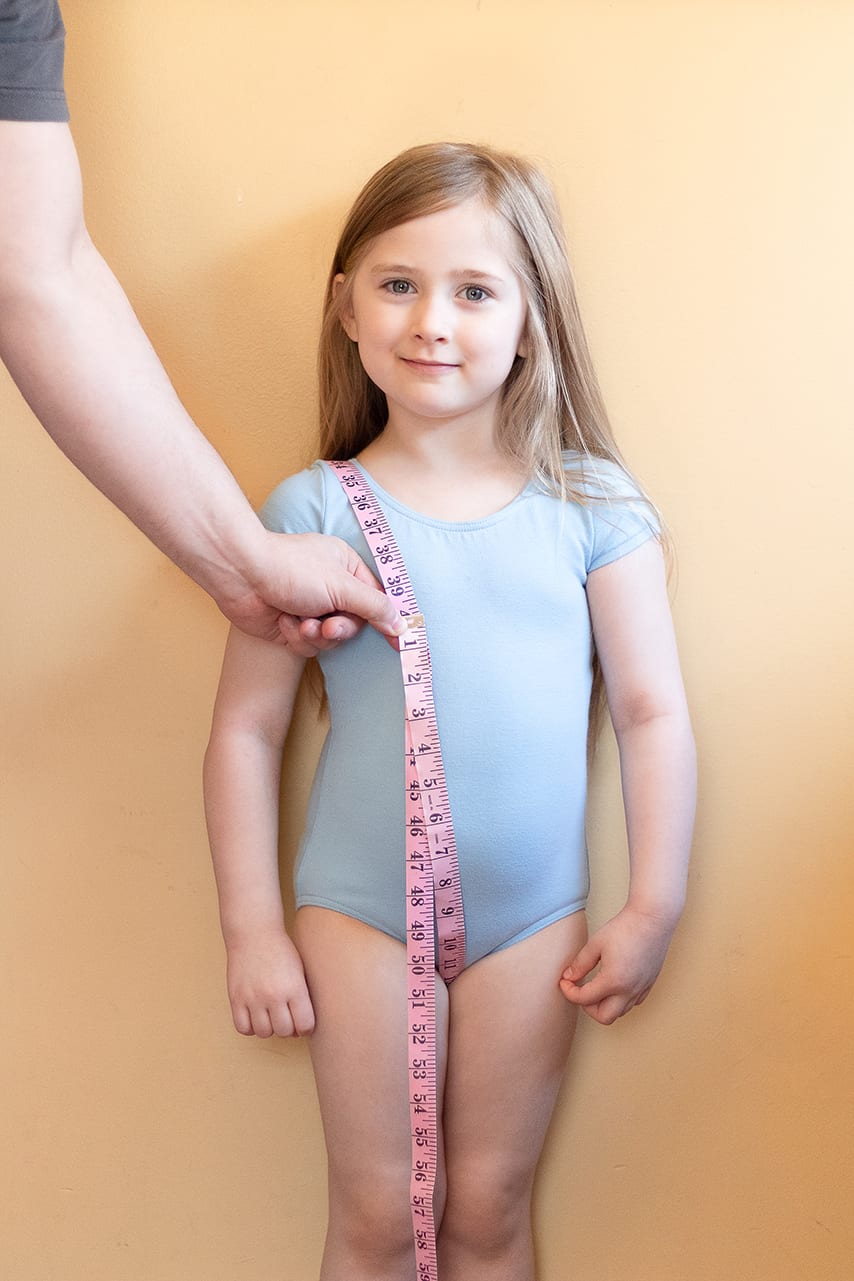
This is the most common measurement that people have trouble with so I will go a bit more in depth than the other measurements here.
To measure your child’s trunk, first have your child stand with their feet slightly apart. Pass the tape measure between your child’s legs and make sure it is resting flat against their crotch and butt. Bring both ends of the tape measure, still keeping the tape measure flat against their body, up towards the shoulder. Where the tape measure crosses the shoulder, position the tape so that it is at the mid-point of their shoulder. Bring the zero end of the tape measure up towards the opposite end and record the measurement. For reference, you can see here that my daughter’s trunk measurement is 40″.
Now that you know how to take your child’s measurements it’s time to make your favorite Simple Life Pattern!
Until Next Time,



